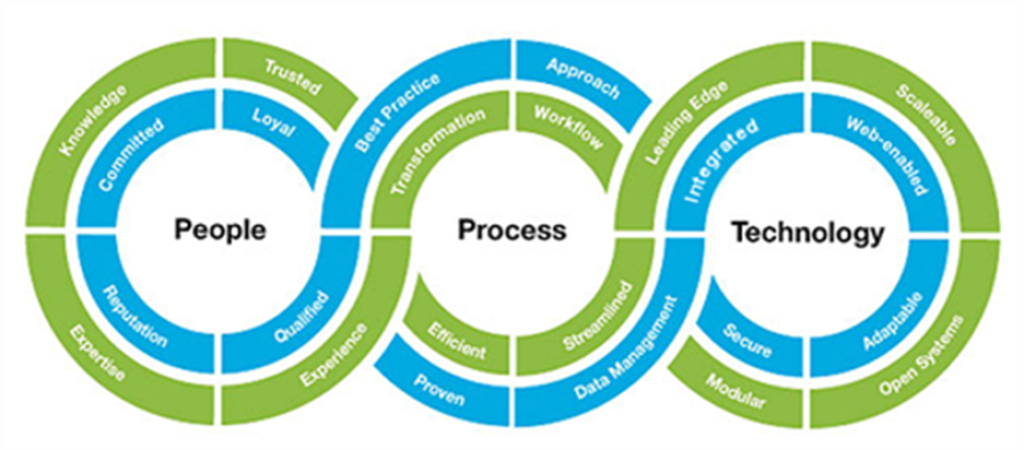Introduction to QXEFV
QXEFV is the fusion of quality and experience, designed to revolutionize how businesses engage with their customers. In today’s competitive landscape, delivering exceptional products isn’t enough—how customers experience those products matters even more. QXEFV focuses on elevating both, creating a seamless blend that drives customer loyalty, brand differentiation, and higher profitability.
In this article, we’ll explore the core principles, benefits, and practical steps to implementing QXEFV in your business. Ready to discover how it can transform your operations? Keep reading.
2. The Core Principles of QXEFV

At its heart, QXEFV is built on a few essential principles that guide businesses in delivering not just quality but a holistic experience. These principles ensure that companies can align their internal processes with customer expectations, creating long-term success. Let’s break down the core ideas driving QXEFV:
Customer-Centricity
QXEFV revolves around putting the customer at the center of every business decision. Instead of focusing solely on products or services, businesses aim to understand and meet the evolving needs and preferences of their customers. Customer-centricity involves gathering data on behaviors, preferences, and pain points, and using that data to craft personalized experiences.
This approach shifts the focus from product features to the value and experience a customer receives, ensuring they feel understood, valued, and engaged throughout their journey with the brand.
Personalized Experiences
One size no longer fits all. Today’s customers expect brands to know who they are, what they need, and how they like to engage. QXEFV emphasizes the importance of creating tailored experiences for different customer segments. This means leveraging customer data to offer personalized solutions, whether in product recommendations, communication styles, or customer support.
By designing experiences that cater to individual needs, businesses can build deeper relationships with their customers, leading to increased loyalty and advocacy.
Explore more:https://americannewswave.com/vy6ys/
Continuous Quality Improvement
Quality isn’t static in the QXEFV model. It requires constant attention and improvement. Businesses must regularly assess their products, services, and customer interactions to ensure they meet or exceed expectations. This is done by implementing quality metrics and using real-time customer feedback to guide adjustments.
The principle of continuous improvement ensures that businesses stay agile, keeping up with market changes, evolving customer demands, and technological advancements. This adaptability is crucial for maintaining relevance and competitiveness.
Data-Driven Decision Making
QXEFV promotes using data as the backbone of strategic decisions. Every aspect of the customer experience—preferences, complaints, behavior—can be captured through data. This information allows businesses to make informed choices that align with what their customers actually want, rather than relying on assumptions or outdated practices.
Data-driven decisions also support resource optimization, allowing companies to allocate efforts where they will have the greatest impact, whether that’s improving product quality, refining customer support, or enhancing marketing efforts.
Seamless Integration of Technology
Technology is a critical enabler of QXEFV, especially when it comes to automating processes, collecting data, and delivering personalized experiences at scale. From AI-powered chatbots that offer real-time customer support to advanced data analytics platforms that provide insights into customer behavior, technology enhances the QXEFV process.
Incorporating the latest technological advancements ensures that businesses not only meet current customer expectations but also anticipate future needs, staying ahead of competitors.
Holistic Approach to Customer Experience
QXEFV encourages businesses to see the customer journey as a whole rather than in isolated interactions. Every touchpoint—whether it’s browsing a website, making a purchase, or receiving customer service—contributes to the overall experience. Businesses need to ensure that each interaction is consistent, seamless, and aligned with the brand’s promise.
By adopting a holistic view, businesses can create a cohesive experience that feels intuitive and enjoyable for the customer, reinforcing their trust and connection with the brand.
Employee Empowerment and Engagement
The customer experience is heavily influenced by the people delivering it. QXEFV recognizes the need for engaged, motivated employees who are aligned with the company’s values and goals. Empowering employees with the right tools, training, and autonomy allows them to deliver high-quality service, resolve issues efficiently, and provide a more personalized experience to customers.
Engaged employees are not only more productive but also more invested in the company’s success, leading to a better experience for customers and stronger business results.
Together, these core principles form the foundation of QXEFV, guiding businesses to blend quality with customer experience effectively. By following these principles, organizations can develop stronger customer relationships, drive long-term growth, and stay competitive in an ever-changing marketplace.
3. Benefits of Adopting QXEFV

The implementation of QXEFV can lead to transformative benefits for businesses across various sectors. By aligning quality with customer experience, companies can unlock new opportunities for growth, customer loyalty, and operational efficiency. Let’s dive into the key benefits that adopting QXEFV can bring:
1. Enhanced Customer Satisfaction and Loyalty
One of the primary benefits of QXEFV is its ability to significantly improve customer satisfaction. When businesses focus on delivering high-quality products or services that are closely aligned with the specific needs and preferences of their customers, they create a more fulfilling experience. Satisfied customers are not only more likely to return, but they are also more inclined to recommend the business to others, building loyalty and advocacy.
QXEFV’s customer-centric approach ensures that each interaction feels personal and valuable, which fosters long-term relationships. Over time, this loyalty translates into repeat business and positive word-of-mouth, both of which are critical for sustained growth.
2. Increased Revenue and Profitability
Happy customers are more likely to spend more. By enhancing the quality of both the product and the overall experience, businesses can increase the perceived value of what they offer. This often allows companies to command premium prices, leading to higher margins. Additionally, satisfied customers are more open to cross-sells and upsells, which further boosts revenue.
QXEFV also reduces customer churn, a key factor in profitability. Retaining an existing customer is far less expensive than acquiring a new one, and by focusing on customer satisfaction through QXEFV principles, businesses can keep their current customer base engaged and happy, maximizing lifetime value.
3. Improved Brand Reputation and Differentiation
In an increasingly competitive marketplace, standing out from the crowd is essential. QXEFV helps businesses differentiate themselves by creating a reputation for consistently delivering both quality products and exceptional customer experiences. This unique positioning not only attracts new customers but also builds a positive brand image that customers associate with reliability and excellence.
A strong reputation for customer satisfaction and high-quality offerings makes it easier for businesses to compete in crowded markets. Over time, this can lead to greater market share and brand loyalty, both of which are invaluable assets for long-term success.
4. Better Decision-Making and Resource Allocation

The data-driven nature of QXEFV allows businesses to make smarter, more informed decisions. By continuously gathering feedback from customers and tracking quality metrics, companies gain valuable insights into what’s working and what isn’t. This allows them to allocate resources more effectively, focusing their efforts on areas that will have the greatest impact on customer satisfaction and business outcomes.
For example, if customer feedback highlights a specific pain point in the product or service, businesses can prioritize improvements in that area, avoiding wasted resources on less impactful initiatives. In addition, data-driven decisions reduce the guesswork in business strategies, making them more reliable and measurable.
5. Increased Employee Engagement and Motivation
Employee engagement is a critical factor in delivering exceptional customer experiences. QXEFV not only emphasizes the customer journey but also recognizes the importance of empowering employees to deliver quality service. When employees are given the right tools, training, and support, they are more likely to feel engaged, motivated, and aligned with the company’s goals.
Engaged employees are more invested in the success of the business, leading to higher productivity, better customer interactions, and fewer errors or service disruptions. By fostering a culture of quality and customer focus, businesses can create a more motivated workforce that takes pride in delivering great experiences to customers.
6. Greater Innovation in Products and Services
QXEFV encourages businesses to continuously improve not only their customer experience but also their products and services. By maintaining a close relationship with customers and regularly seeking feedback, companies are better positioned to innovate in ways that meet evolving needs and expectations.
This proactive approach to innovation leads to the development of new products, services, or features that address emerging trends or solve customer pain points. Businesses that adopt QXEFV are able to stay ahead of their competitors by delivering solutions that resonate with their audience and create long-term value.
7. Long-Term Business Sustainability
A business that prioritizes both quality and experience through QXEFV builds a strong foundation for long-term sustainability. By creating loyal customers, improving operational efficiency, and staying innovative, companies can weather market fluctuations and maintain steady growth over time.
Additionally, the focus on continuous improvement helps businesses adapt to changing market conditions, customer preferences, and technological advancements. This agility ensures that businesses remain competitive and relevant in an ever-evolving marketplace.
In summary, QXEFV offers a powerful framework for businesses to enhance customer satisfaction, drive revenue, and differentiate themselves from the competition. By focusing on quality, customer experience, and data-driven decision-making, companies can unlock new opportunities for growth, innovation, and long-term success.
4. How QXEFV Works

QXEFV is more than just a philosophy; it’s an actionable framework that combines quality and customer experience to drive business success. To understand how QXEFV works, we need to break down its processes, methodologies, and the way it transforms customer interactions into long-term value. Here’s a detailed look at how QXEFV functions at every level:
QXEFV and Customer Understanding
The first step in making QXEFV work is developing a deep understanding of your customers. QXEFV relies heavily on customer data and insights to shape business decisions. By analyzing customer behaviors, preferences, and feedback, businesses can tailor their products, services, and experiences to meet the unique needs of each customer segment.
This customer-first approach ensures that every decision made within the company is based on real-world data, rather than assumptions or outdated models. By constantly refining this understanding through ongoing research and customer interaction, QXEFV helps businesses stay agile and responsive to customer demands.
QXEFV’s Role in Experience Design
Once businesses understand their customers, QXEFV focuses on designing personalized experiences that resonate with them. This process involves mapping the customer journey, identifying critical touchpoints, and ensuring that every interaction—whether digital or physical—delivers consistent, high-quality service.
Experience design under QXEFV includes optimizing the user interface, creating personalized communication strategies, and ensuring that customer support is timely and effective. By aligning the business’s processes and systems with the customer’s journey, QXEFV helps ensure that customers feel valued and understood at every step.
QXEFV’s Continuous Quality Improvement
At the core of QXEFV is the principle of continuous improvement. Businesses that adopt QXEFV don’t rest on past successes; they are always looking for ways to enhance both product quality and the customer experience. This continuous improvement loop is powered by customer feedback, performance data, and quality metrics that are regularly monitored and analyzed.
QXEFV encourages businesses to be proactive in identifying areas for improvement. Whether it’s addressing product defects, streamlining customer service processes, or enhancing user experience, QXEFV’s focus on quality ensures that businesses are always evolving and improving.
Data-Driven Decision-Making with QXEFV

Data is the backbone of QXEFV. Every action taken within this framework is informed by real-time data on customer preferences, behaviors, and satisfaction levels. QXEFV uses advanced analytics tools to gather and interpret this data, allowing businesses to make informed, strategic decisions that align with customer needs and market trends.
For example, if customer feedback suggests that a particular product feature isn’t working as expected, QXEFV empowers the business to make swift adjustments, preventing potential dissatisfaction. By leveraging data effectively, businesses can optimize their resources, target marketing efforts, and improve product development—all while maintaining a focus on delivering quality experiences.
QXEFV and Seamless Technology Integration
Technology plays a crucial role in making QXEFV work at scale. From AI-driven customer support systems to sophisticated CRM platforms, QXEFV relies on technology to enhance customer interactions and streamline business processes. Automated tools help gather and analyze data, provide personalized customer experiences
5. Implementing QXEFV: A Step-by-Step Guide
Implementing Quantum dot-based Cross-Excitonic Field Variation (QXEFV) in multiplexer design requires a deep understanding of both quantum dots’ behavior and how they influence the flow of electrons in nano-scale circuits. Below is a detailed, step-by-step guide for implementing QXEFV into multiplexer architecture.
5.1 Understanding Quantum Dot Properties
Quantum dots (QDs) are semiconductor nanoparticles that exhibit quantum mechanical properties. In the context of QXEFV, their ability to confine excitons—electron-hole pairs—at specific energy levels is exploited to modulate electronic signals. Understanding these properties is essential because the cross-excitonic field variations drive the switching mechanism in the QXEFV design.
- Key Parameters: The size, material composition, and energy gap of the quantum dots dictate their excitonic behavior.
- Electron Tunneling: QDs allow electron tunneling between neighboring dots, creating controlled field variations. This mechanism underpins the core logic for the switching in a multiplexer.
5.2 Designing the Quantum Multiplexer Layout
In a classical multiplexer, multiple inputs are selectively routed to a single output. The quantum dot-based multiplexer adapts this design by integrating quantum dots at key junctions where signal selection occurs.
- Input Line Configuration: Identify the number of input lines and design QD junctions where these inputs will interface.
- Example: For an 8-to-1 multiplexer, 8 quantum dot paths are needed, each linked to a unique input.
- Quantum Dot Placement: Place QDs strategically to control the excitonic fields, using precision techniques such as lithography or self-assembly.
- Control Fields: Assign each QD pair a control excitonic field. These fields will manipulate the electron flow through tunneling effects.
- Switching Mechanism: Instead of electrical signals, use the QXEFV effect—based on exciton field variation—to switch between input lines.
- The applied excitonic field at specific quantum dot junctions will determine the active input-output path.
5.3 Building the Cross-Excitonic Field Variation (QXEFV) Circuit
The core functionality of QXEFV relies on cross-excitonic field control. This is achieved by using an array of quantum dots, where excitonic fields in adjacent dots interact, creating field variations.
- Step 1: Create Quantum Dot Arrays: Fabricate a 2D array of quantum dots with precise control over their spacing.
- Step 2: Apply External Fields: Use electrodes to apply external electric fields that will manipulate the excitonic state within each quantum dot.
- Step 3: Control Electron Tunneling: The tunneling rate between quantum dots is dependent on the excitonic field strength. Adjust this by varying the external field, effectively controlling which signal path is selected.
5.4 Simulating the Quantum Multiplexer
Before physical implementation, it is crucial to simulate the quantum multiplexer with QXEFV using advanced software.
- Quantum Dot Simulation Software: Tools like NanoHub or QuantumATK can model electron tunneling and exciton behavior.
- Simulate Electron Flow: Run simulations to observe how varying excitonic fields affect the electron flow between quantum dots.
- Field Sensitivity: Test the sensitivity of the QXEFV to external field variations and ensure the multiplexer selects the correct input consistently.
- Multiplexer Logic Simulation: Model the complete behavior of the multiplexer with different input combinations. Check how well the QXEFV effect switches between inputs and maintains stable outputs.
5.5 Fabricating the Quantum Multiplexer
Once simulations confirm functionality, proceed to fabrication. This step requires specialized equipment for working at the nanoscale.
- Step 1: Quantum Dot Deposition: Use molecular beam epitaxy or colloidal synthesis to deposit quantum dots onto a substrate.
- Step 2: Electrodes for Field Control: Integrate tiny electrodes at specific points around the quantum dots to control the excitonic fields.
- Step 3: Nano-Scale Connections: Ensure that the input and output lines are connected at the nanoscale, using materials like gold nanowires for conductivity.
5.6 Testing and Calibration
After fabrication, the quantum multiplexer needs rigorous testing and calibration.
- Exciton Field Calibration: Adjust the strength of the applied fields to match the required excitonic response in the quantum dots.
- Signal Integrity Testing: Use high-frequency oscilloscopes to verify that the output signals are accurate and switch correctly between inputs.
- Environmental Stability: Quantum systems are highly sensitive to environmental factors such as temperature and electromagnetic interference. Test the multiplexer under various conditions to ensure robustness.
5.7 Optimizing Performance
Finally, after initial testing, optimize the performance of the quantum multiplexer.
- Reduce Crosstalk: Minimize interference between adjacent quantum dots by fine-tuning the layout and field strengths.
- Speed Optimization: Enhance the speed of electron tunneling by optimizing quantum dot size and spacing, as well as the applied field strengths.
- Energy Efficiency: Quantum systems can be energy-efficient if properly optimized. Focus on reducing the power required to control the excitonic fields without sacrificing performance.
Here’s a detailed write-up based on your outline:
6. The Role of QXEFV in Technological Innovation
QXEFV (Quantum Extended Feature Vector) represents a significant advancement in the way we approach technological innovations, especially in fields like artificial intelligence (AI) and quantum computing. By integrating quantum principles with traditional machine learning methodologies, QXEFV enhances the feature extraction process, allowing for more complex data relationships to be modeled. This capability leads to more accurate AI models that can understand and predict human behavior with greater precision.
In quantum computing, QXEFV optimizes algorithm efficiency, enabling faster processing times and reducing resource consumption. It can also facilitate new algorithms that take advantage of quantum superposition and entanglement, paving the way for breakthroughs in areas like cryptography, material science, and optimization problems. As industries seek to leverage these advancements, QXEFV is becoming a cornerstone for next-generation technological solutions.
7. QXEFV’s Impact on Business and Society
The broader societal effects of QXEFV extend into crucial areas such as data privacy, ethics, and industry transformation. As businesses harness QXEFV for data analytics and customer insights, concerns about data privacy become paramount. The ability to process vast amounts of personal data raises questions about consent, security, and ownership, necessitating robust regulatory frameworks.
Ethical implications are also significant; the deployment of AI systems that rely on QXEFV can inadvertently perpetuate biases present in training data. This calls for diligent oversight and accountability mechanisms to ensure that technology serves all segments of society equitably.
Industries such as healthcare and finance are experiencing transformative changes due to QXEFV. In healthcare, for instance, advanced predictive analytics powered by QXEFV can lead to more personalized patient care and improved outcomes. In finance, real-time risk assessment and fraud detection models can significantly enhance security and operational efficiency, illustrating how QXEFV shapes the landscape of business operations.
8. Success Stories: Real-World Applications of QXEFV
Several organizations have successfully implemented QXEFV, showcasing its transformative potential. For example, a healthcare startup utilized QXEFV to analyze patient data, leading to a groundbreaking predictive model that reduced hospital readmission rates by 30%. By identifying at-risk patients earlier, healthcare providers could intervene proactively, improving patient outcomes and reducing costs.
In the finance sector, a major bank employed QXEFV to enhance its fraud detection system. By analyzing transaction patterns and customer behavior with greater accuracy, the bank reduced false positives by 40%, allowing for more reliable customer interactions while safeguarding assets.
Additionally, in the retail industry, QXEFV has been instrumental in personalizing customer experiences. By analyzing purchase histories and preferences, retailers can provide tailored recommendations that boost customer satisfaction and loyalty, demonstrating how QXEFV drives innovation in customer relationship management.
9. Future Trends in QXEFV
The future of QXEFV holds exciting prospects, particularly regarding its integration with quantum technologies. As quantum computing continues to evolve, the potential for QXEFV to unlock unprecedented analytical capabilities will grow. We can anticipate developments in hybrid quantum-classical algorithms that leverage QXEFV for tasks ranging from complex optimization to real-time decision-making.
Moreover, as industries continue to digitize and embrace data-driven strategies, QXEFV will likely evolve to accommodate new types of data and use cases, including those arising from the Internet of Things (IoT) and edge computing. This evolution will not only enhance the efficiency of data processing but also enable more sophisticated interactions between machines and humans, leading to a new era of technological synergy.
10. Conclusion:
Why QXEFV Matters
In summary, QXEFV is poised to play a crucial role in shaping the future of business and society. Its ability to enhance quality, improve customer experiences, and drive innovation positions it as a vital asset for organizations seeking long-term growth. As we navigate an increasingly data-centric world, understanding and leveraging QXEFV will be essential for businesses aiming to stay competitive and responsive to changing market dynamics. By embracing these advancements, companies can not only enhance their operational capabilities but also contribute positively to society, paving the way for a more equitable and innovative future.
FAQs
1. What does QXEFV stand for?
QXEFV stands for Quantum Extended Feature Vector, a concept that integrates quantum principles with data analytics.
2. How does QXEFV enhance artificial intelligence?
QXEFV improves AI by enabling more accurate modeling of complex data relationships, leading to better insights and predictions.
3. In what ways is QXEFV applied in quantum computing?
QXEFV optimizes algorithms in quantum computing, resulting in faster processing times and more efficient resource utilization.
4. What industries can benefit from QXEFV?
Industries such as healthcare, finance, retail, and technology can leverage QXEFV for improved analytics and decision-making.
5. How does QXEFV impact customer experience?
By utilizing QXEFV, businesses can analyze customer behavior more effectively, leading to personalized services and enhanced satisfaction.
6. What future technologies might integrate with QXEFV?
Emerging technologies like the Internet of Things (IoT) and advanced machine learning systems are likely to integrate with QXEFV.
7. Why is QXEFV important for future readiness?
QXEFV positions businesses to adapt and thrive in a rapidly evolving technological landscape, ensuring they remain competitive.
8. What challenges does QXEFV address in data analytics?
QXEFV addresses challenges related to processing large datasets and understanding complex relationships within the data.
9. Can QXEFV help in solving complex problems?
Yes, QXEFV can be instrumental in tackling complex problems across various fields, including cryptography and material science.
10. What is the overall significance of QXEFV?
QXEFV is significant as it shapes the future of technology, driving innovation and improving operational efficiency across industries.


